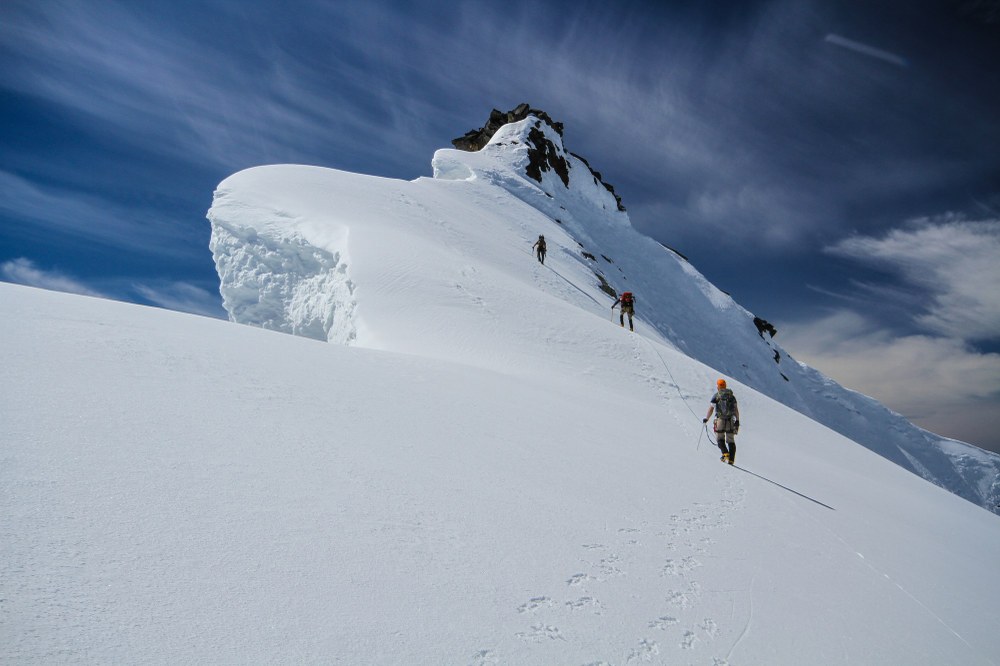
Recently, a group of 6 climbers were on Sahale Peak in the Boston Basin area of North Cascades National Park. They'd enjoyed great weather, and climbed efficiently up the Quien Sabe Glacier on the northwest side of the peak, reaching the summit around 10:30am.
After some rest on the top, the group started their descent by rappelling off the south side of the peak towards the Sahale Glacier. The rappels reached a 45 degree snow slope at the base of the rocky summit pyramid. With the recent heat we've had, there was a large island of scree below them in the snow field, so the leader directed the team to traverse skier's left to avoid the rocky patch.
As the group traversed the soft snow, one of the basic students slipped and fell. The student was able to quickly get into a good self-arrest position, but it was not enough to stop her slide. She was able to slow down a bit, but still hit the patch of rocks with enough speed to send her tumbling.
The leader asked the two climbers who were closest to her, a rope lead and a very experienced basic student, to continue climbing down to her while he assisted the rest of the group down the slope. By the time the leader got everyone down and reached the fallen climber, she had been checked out and insisted she was okay, although clearly shaken up emotionally. She had an abrasion on her right elbow that was attended to and a dented helmet.
The group tied into a rope to cross the Sahale Glacier, and then stopped at Sahale Camp where the fallen climber was given a second, more thorough examination by her friend who had recently taken a WFA course. The friend found more abrasions on the climber's backside and a minor contusion on her forehead.
The team distributed the climber's gear and she exchanged helmets with another climber as they crossed a rocky section of the trail, just in case there was another fall. They hiked the rest of way back to the cars without incident.
Lessons Learned:
As many of you know, not only am I a Mountaineers member, but I also guide for the American Alpine Institute. One of the things that we are taught is that you should always be evaluating the likelihood of a fall and then the consequences of a fall. Many parties would be tempted to remove their helmets once they reached "easier" terrain at the base of the rappels. But in the case of this incident, the likelihood of a fall was elevated by the soft snow conditions and the steepness of the slope, and the consequences were also elevated by the rocky patch below the climbers. The decision to keep helmets on may have prevented this incident from being more severe than it already was.
Another good lesson learned is regarding the climber's arrest. Although she was not able to fully arrest the fall, she kept fighting and was able to reduce the speed of her descent. If she did not continue to try arresting the fall, she would have impacted the rocks with much more speed, which could have produced any number of more severe injuries.
In the end, keep in mind that the majority of accidents happen after the summit has been reached. The trip is not really over until you are back home.
Add a comment
Log in to add comments.Firstly, I'm glad to hear that she was ok. I think this is a great reminder especially for experienced climbers who on occasioin can become complacent or who may be leading a trip with less experienced climbers.
 James Pierson
James Pierson